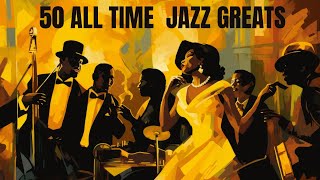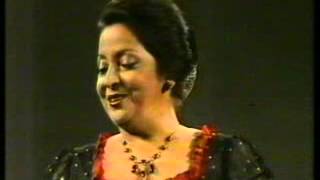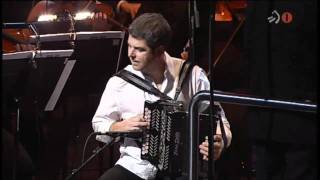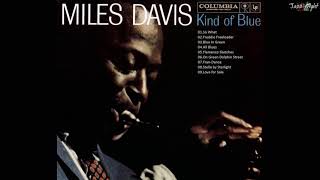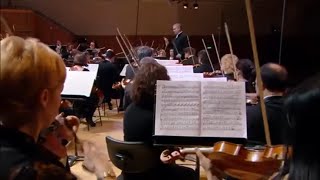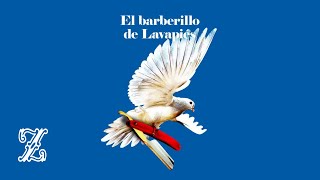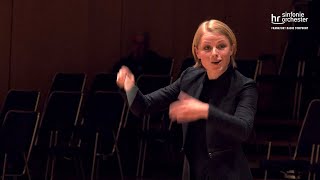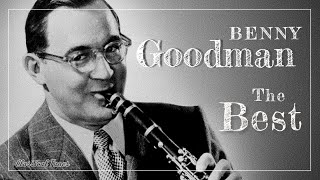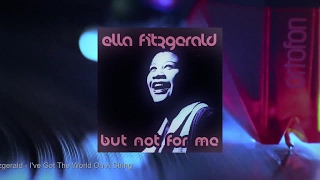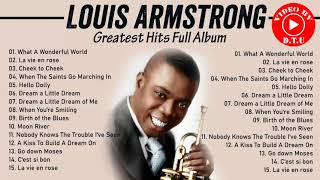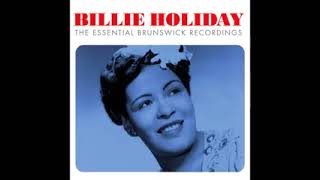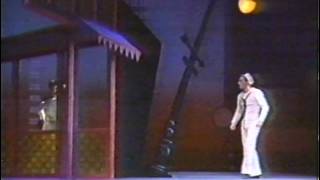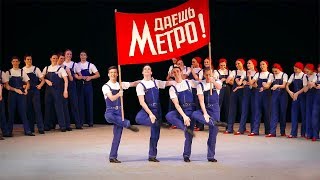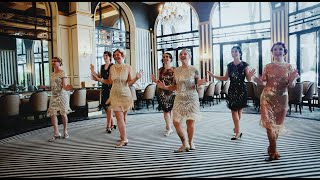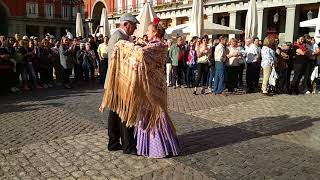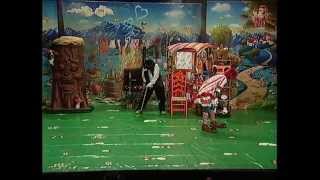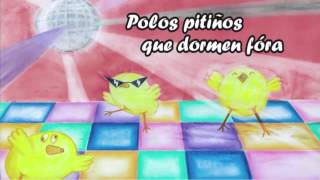April 30, international jazz day.
May 1, international workers day.
May 2, Day of the Community of Madrid
Recommended music videos for initiation to classical music
Jazz is a musical genre born in the USA at the end of the 19th century . The German critic Joachim-Ernst Berendt describes it this way “ Jazz is a musical art form that originated in the United States through the confrontation of blacks with European music. The instrumentation, melody and harmony of jazz are derived mainly from the music of the West . The rhythm, phrasing and harmony elements of blues are derived from African music and the musical concept of African Americans.” The same author points out the three basic elements that distinguish jazz from European classical music: a) A special rhythmic quality known as swing . b) The role of improvisation and c) An individual sound and phrasing that reflects the personality of the performing musicians.
The Internationale (L'Internationale in French) is the most famous song of the Labor Movement . It is considered the official anthem of workers around the world and of most socialist and communist parties as well as some anarchist organizations. The original lyrics, in French, are by Eugène Pottier , and were written in 1871 within his work Cantos Revolucionarios . In 1888, Pierre de Geyter composed it to music at the request of Gustave Delory , leader of the French Workers' Party in the city of Lille ( France ), for the repertoire of the party's choir, the Workers' Lyre (La Lyre des Travailleurs). In 1889 it was adopted as the anthem of the Second International (now the Socialist International ) and as the anthem of the USSR from its creation in 1922 until 1944.
Today we offer a Production made by the Presidency of the Latin American and Caribbean Confederation of State Workers (CLATE) on the workers' anthem " La Internacional ". Arrangement and musical direction: Felipe Traine ; guitar: Juan Martínez ; percussion: Osvaldo Avena ; guitar, guitarron, charango and jarana: Felipe Traine ; voice in Spanish: Natalia Martínez ; voice in Portuguese: Patricia Souza ; four and voice: David Bedoya ; violin: Maritza Pacheco ; mandolin: Sebastián Luna ; quena and sikus: Maite Fleischmann .
Federico Chueca (1846-1908) was born in Madrid , in the Plaza de la Villa into a wealthy family; He received music theory classes from primary school, which he attended at a select school, but his family forced him to abandon music to study medicine. Barbieri helped him orchestrate and direct the works and their great success convinced Chueca to leave medicine and dedicate himself to music. He is considered a self-taught musician with an innate talent and a grace with melody and rhythm, which led him to compose extraordinary musical pieces. He worked with several collaborators, but especially with Joaquín Valverde , in many of his works. Currently he is considered one of the greatest representatives of the chico genre (one-act zarzuelas).
La Gran Vía is a zarzuela in one act and five scenes with music by the teachers Federico Chueca and Joaquín Valverde and a libretto by Felipe Pérez y González premiered at the Teatro Felipe in Madrid on July 2, 1886. It achieved such fame that they had to Some pictures were changed, since being a current affairs magazine, it had to be modernized. This is how new paintings appeared, such as On Alcalá Street , or The Toy Bazaar . He is an exponent of the boy genre taken to the field of current affairs magazine, where the social and political concerns of the moment were exposed with good humor and satirical sense. The libretto skillfully and satirically portrays the news of the moment, showing on stage a great parade of comic types and situations with great effect.
Teresa Berganza Vargas (1933-2022) was a Spanish zarzuela and opera singer, considered one of the most important interpreters of her time of Rossini, Mozart Bizet, admired for her technique, musicality and presence on stage. He studied piano and singing at the Madrid Conservatory , where he won first prize for singing in 1954. He debuted in that city in 1955. Two years later he made his international debut at the Aix-en-Provence Festival . During the ten years Following her debut at La Scala , Glyndebourne Festival, Royal Opera House , Metropolitan Opera House ... Her concert repertoire included Spanish, French, German and Russian songs. In 1994 she was elected member of the Royal Academy of Fine Arts of San Fernando , the first woman to obtain this distinction.
Kepa Junkera Urraza (1965) is a Basque musician, composer and producer of folk music in Basque . Master of the trikitixa , he has published thirty albums until 2018. Throughout his career he has obtained numerous recognitions and awards; in 2003 the Eduardo Martínez Torner folklore award "for having revolutionized the world of trikitixa ." In 2004 he won the Latin Grammy Award for best folk album for his live album. Junkera offers teaching work at Musikene , Higher Music Center of the Basque Country , taking both traditional Basque music and its instruments to a new space more in line with the current times.
The Trikitixa is a diatonic button accordion, of Italian origin, which has been used since the 19th century in the Basque Country , especially in popular pilgrimages (in 1889 we have the first written mention of a pilgrimage with this instrument in Urkiola ); The most open theories say that this musical instrument came from the Alps , from the border between France and Italy . In the Basque Country , it is most often played together with a tambourine; that is, together with a tambourine. Therefore, more than the instrument itself, it is the type of music that this couple creates that is called by that name.
Today Kepa Junkera, accompanied by the Euskadi Symphony , offers us a symbiosis of Basque, Galician, Arabic, Turkish and Bulgarian music.
Recommended classical music videos
Miles Dewey Davis (1926-1991), known as Miles Davis , was an American jazz trumpeter and composer. He is one of the most relevant, innovative and influential figures in the history of jazz , along with artists such as Louis Armstrong, Duke Ellington, Charlie Parker and John Coltrane . Davis 's career, which spans fifty years, covers the history of jazz throughout the second half of the 20th century , characterized by its constant evolution and search for new artistic paths: Davis participates with equal force in bebop and cool , as well as hardbop and avant-garde jazz , especially in its modal aspect and fusion with rock . The sound of his trumpet is soft and melodic, based on short notes, tending toward lyricism and introspection, characteristic for his use of the mute.
Kind of Blue is a jazz studio album by Miles Davis released in August 1959. Miles was accompanied by legendary saxophonist John Coltrane and double bassist Paul Chambers , the team was completed by Julian "Cannonball" Adderley , on alto saxophone, Jimmy Cobb on drums and Bill Evans on piano. The album was based on modal forms, which allowed wide possibilities of transit through scales based on a predetermined note instead of the linear sequence of chords that jazz developed until then. Considered the masterpiece of the genre , it became a great commercial success with sales of more than four million copies in the United States and the best-selling album of Davis 's career and in the history of jazz .
Topic index : I (0:00) So what .-. II (9:26) Freddie Freeloader .-. II (19:13) Blue In Green .-. IV (24:51) All Blues .-. V (36:34) Flamenco Sketches .-. VI (45:46) On Green Dolphin Street .-. VII (55:40) Fran - Dance .-. VII (1:01:28) Stella by Starlight .-. VIII (1:06:14) Love for Sale
Dmitri Shostakovich (1906-1975) is one of the most recognized composers of the 20th century , who had to adapt to the political status with which he had to live. His music was sometimes denounced as decadent and reactionary and other times praised as representative of the new socialist art by the CPSU . In public, he was always loyal to the system and held important responsibilities in artistic institutions, accepting membership in the CPSU in 1960 and becoming a member of the Supreme Soviet . He wrote fifteen string quartets, another fifteen symphonies, six concertos, several operas, as well as film and ballet music. His music stands out for its relevant contrasts and original rhythmic aspects underpinned by an energetic, sometimes burlesque, character.
Catalog of Shostakovich's works . His works are classified by their Opus number ( from the Latin opus, 'work'), which is a term used in music to catalog the works of most composers. Since the 17th century , this form of cataloging began to be used every time a work was published, preceding the word Opus , or its abbreviation Op ., to its order number.
Third Symphony 'The First of May', op. 20 (Third Symphony “May One”). The Symphony was composed by Shostakovich in 1929, when the composer was 23 years old. The piece has many similarities with Symphony No. 2 ; Both consist of a single movement and use a mixed chorus whose text extols Marxist or socialist ideas. It was a time when Soviet artists were free to create art as they pleased; Therefore, Shostakovich was not coerced or persuaded to write these "revolutionary" works, as he would later be with other works. Apparently, the composer saw the revolution as a signal to introduce new musical ideas, especially formal ones, in which this symphony "expresses the spirit of peaceful reconstruction."
The symphony consists, as we have said, of a single movement, ALLEGRETTO, in the key of E b major divided into four sections without interruption between them. It practically lacks thematic development and its interpretation is complex. Certain rhythmic patterns appear throughout the work to offer some unity, but traditional thematic transformations and relationships are absent. In the final segment appears choral music whose text is an adaptation of the poem "The First of May!" by Semyon Kirsanov . The text is in praise of May 1 and the revolution that celebrates International Workers' Day .
Today it is offered to us by the Mariinsky Choir and Orchestra under the expert direction of the eminent maestro Valery Gergiev .
Francisco Asenjo Barbieri (1823-1894) was a Spanish composer born in Madrid who, after entering the Madrid Conservatory , studied piano, clarinet, singing and composition, managing to write, throughout his career, more than 70 zarzuelas. Founder of the magazine La España Musical , he decisively defended the ideas of musical theater in Spanish, which ultimately led to the resurgence of zarzuela . He was an academic of Fine Arts and member of the Royal Spanish Academy
El Barberillo de Lavapiés is a zarzuela in three acts with a libretto by Luis Mariano de Larra and music by maestro Barbieri . It premiered with great success at the Teatro de la Zarzuela on December 19, 1874 and tells us the entertaining adventures of Lamparilla , a barber from Lavapiés , and the seamstress Paloma who find themselves immersed in a world of political intrigue within the traditional atmosphere of the Madrid of Charles III ; Today we can see it under the direction of José Miguel Pérez Sierra .
Wolfgang Amadeus Mozart, KV 525 (1756-1791) is considered one of the three giants of musical composition along with Bach and Beethoven . Child prodigy born in Salzburg , at the age of six he mastered the keyboard and violin and began to compose. His father, Leopold, exhibited him on exhausting tours of different European courts. Prolific composer (more than 600 works written from the time he was five years old until his death) he cultivated all types of musical genres: piano works, chamber music, symphonies, concert works, choral works, operas... each and every one of them, masterpieces of its gender. His operas The Magic Flute, Don Giovanni, Cosí fan Tutte, and The Marriage of Figaro are among the 10 most performed operas in the world. He died in Vienna at the age of 35.
The catalog of Mozart's works or Köchel Catalog ( Köchel Verzeichnis, in German) was created by Ludwig von Köchel in 1862 and lists the musical works composed by Wolfgang Amadeus Mozart . Each of Mozart 's works is designated by a number preceded by the abbreviation K. or KV ; number that designates the chronological order of its creation and that is actually valid for most of the works, although some works by other authors appear erroneously attributed to Mozart , and omits other authentic ones that had not yet been discovered.
The Serenade is a musical form conceived for an instrument or reduced instrumental ensemble, which can consist of one or several movements. It was an entertainment that achieved enormous popularity during the 18th century ; It was played at dusk, often outdoors, and was the delight of evenings in the gardens of the aristocrats' palaces. The term serenade comes from the Italian serena (evening) or al sereno (outdoors); That is to say, it is music to be performed outdoors and at dusk. The origin of the serenade is in the ballads that lovers sang at dusk in front of their beloved's windows.
Eine kleine Nachtmusik K. 525 (Little Night Serenade) is one of the most popular compositions by Mozart and in the universal repertoire of classical music . It is dated in Vienna on August 10, 1787, coinciding with the composition of the opera Don Giovanni . However, it is not known for whom or why Mozart composed it. Written for string orchestra in five movements, only four have been preserved: I (0´17´´) ALLEGRO .-. II (6'17'') ROMANCE. ANDANTE .-. III (11´41´´) MINUET-TRIO. ALLEGRETTO .-. IV (13´43´´) RONDO. ALLEGRO. This serenade has a light, happy and carefree character, very consistent with the function of this musical genre. The version is by the Frankfurt Radio Symphony conducted by German maestro Ruth Reinhardt .
Recommended music videos for all tastes
Swing music , also known as swing jazz or simply swing , is a style of jazz that originated in the United States towards the end of the 1920s. Swing uses a rhythm section made up of piano, double bass and drums; brass such as trumpets and trombones; woodwind instruments, such as saxophones and clarinets; and very occasionally, stringed instruments such as violin or guitar; It also preferably settles at medium and fast tempos and generalizes melodic riffs (short repetitive phrases). The characteristic ensemble of the style was the Big Band , with the role of the soloist acquiring great importance. Glenn Miller, Fletcher Henderson, Benny Goodman, Duke Ellington and Count Basie stood out in this style.
Swing characteristics . The drums are the only instrument with a completely rhythmic function, which gives it special relevance as the driving force of the entire band; enhances the melodic themes by establishing an invariable structure of the pieces and rigidly fixing the place and duration of the improvisations; It uses, as a tension resource, the riff - a short phrase repeated several times, with a final crescendo - and consolidates the use of the upper registers of the instruments, with preference over the lower ones.
Benny Goodman (1909 –1986) was an American jazz clarinetist and bandleader. Known as The King of Swing , he is, along with Glenn Miller and Count Basie , the most popular representative of this jazz style and the initiator of the so-called swing era . Their continued successes inspired Goodman to organize a permanent orchestra with which the most relevant performers of the time collaborated. On the other hand, various composers from the classical world composed works for him. Thus, Aaron Copland dedicated his Clarinet Concerto to him, Béla Bartók his Contrasts for Violin, Clarinet and Piano , Paul Hindemith the Clarinet Concerto and Malcolm Arnold with the Clarinet Concerto No. 2 .
The King Of Swing . 00:00:00 Sing, Sing, Sing.-. 00:08:42 Why Don't You Do It Right? .-. 00:11:55 Tea for Two (feat. Lionel Hampton, Teddy Wilson, Gene Krupa) .-. 00:15:01 All the Cats Join in (feat. Liza Morrow) .-. 00:18:12 Let's Dance .-. 00:20:28 Ain't Misbehavin' .-. 00:23:55 Chicago.-. 00:26:56 Don't Be That Way.-. 00:30:16 Get Happy.-. 00:33:22 .-. Flying Home .-. 00:36:36 King Porter Stomp .-. 00:39:55 Winter Weather .-. 00:42:57 Big John's Special .-. 00:46:06 Whispering .-. 00:48:46 Santa Claus Came in the Spring.
Ella Fitzgerald (1917-1996), considered the most important and influential singer in the history of jazz and known as the Queen of Jazz , was an American jazz singer, although her repertoire included gospel, blues, swing, bossa songs. nova, pop, Christmas songs , etc., etc.; She had a vocal range of three octaves, a clear and precise vocalization and a formidable capacity for improvisation. In the 1950s he set a standard with his conception of the melodic song, parallel to the work of Frank Sinatra , with his versions of the songs of the great composers of American popular song. She won fourteen Grammy Awards , including the Grammy for her entire career, and was awarded the US National Medal of Arts .
But Not For Me . 1 | 00:00 | Ella Fitzgerald - I've Got The World On A String .-. 2 | 03:18 | Ella Fitzgerald - Smooth Sailing .-. 3 | 06:24 | Ella Fitzgerald - Bewitched, Bothered, And Bewildered .-. 4 | 13:29 | Ella Fitzgerald - Nice Work If You Can Get It .-. 5 | 16:07 | Louis Armstrong & Ella Fitzgerald - There's A Boat Dat's Leavin' Soon For New York .-. 6 | 21:05 | Ella Fitzgerald - Stormy Weather .-. 7 | 26:19 | Ella Fitzgerald - But Not For Me .-. 8 | 29:33 | Ella Fitzgerald - Cotton Tail .-. 9 | 32:59 | Ella Fitzgerald - Bewitched.-. 10 | 40:03 | Louis Armstrong & Ella Fitzgerald - Can't We Be Friends .-. 11 | 43:50 | Ella Fitzgerald - Spring Will Be A Little Late This Year .-. 12 | 47:11 | Ella Fitzgerald - After You've Gone .-. 13 | 51:19 | Ella Fitzgerald - I Got It Bad (and That Ain't Good) .-. 14 | 57:35 | Louis Armstrong & Ella Fitzgerald - They All Laughed .-. 15 | 1:01:22 | Ella Fitzgerald - Blue Moon .-. 16 | 1:04:34 | Ella Fitzgerald & Nelson Riddle - I Hear Music .-. 17 | 1:06:54 | Ella Fitzgerald – Tenderly .-. 18 | 1:10:07 | Ella Fitzgerald - I've Got A Crush On You .-. 19 | 1:13:22 | Ella Fitzgerald - Georgia On My Mind .-. 20 | 1:16:53 | Louis Armstrong & Ella Fitzgerald - Our Love Is Here To Stay .-. 21 | 1:20:54 | Ella Fitzgerald - Blue Skies .-. 22 | 1:24:40 | Ella Fitzgerald - Moonlight In Vermont .-. 23 | 1:28:00 | Ella Fitzgerald - Get Happy.-. 24 | 1:31:32 | Ella Fitzgerald - Let's Do It (let's Fall In Love) .-. 25 | 1:35:07 | Ella Fitzgerald - Star Dust .-. 26 | 1:39:08 | Ella Fitzgerald - Someone To Watch Over Me .-. 27 | 1:42:24 | Ella Fitzgerald - I've Got You Under My Skin
Louis Armstrong (1901-1971), also known as Satchmo or Pops , was an American jazz trumpeter and singer. He is one of the most charismatic and innovative figures in the history of jazz and, probably, its most popular musician. Thanks to his musical skills and his brilliant personality, he transformed jazz from its initial status as dance music into a popular art form. Although at the beginning of his career he established his fame primarily as a trumpet player, later it would be his status as a vocalist that would establish him as an internationally recognized figure with enormous influence on jazz singing.
Billie Holiday (1915-1959) was an American singer born in Philadelphia and considered one of the three most relevant women in the history of jazz along with Sarah Vaughan and Ella Fitzgerald . His song Strange Fruit was considered the best song of the 20th century by Time magazine and his mastery of swing and expressive capacity were reflected both in the composition of his arrangements and songs and in their interpretation. His life from the beginning was very tumultuous with a 13-year-old mother, a 15-year-old father, who abandoned him when he was a baby, a rape that he suffered at the age of ten, and openly manifested bisexuality. His drug addiction progressively undermined his physical and emotional state until he died at the age of 44.
Recommended peculiar videos
Leonard Bernstein (1918 – 1990) was an American composer, pianist and conductor. He was the first conductor born in the USA to achieve worldwide fame, famous for having conducted the New York Philharmonic Orchestra , for his Concerts for Young People on television between 1958 and 1972 and for his many compositions, including West Side Story (1957 ) and Candide . He was also an essential figure in the modern revival of the music of Gustav Mahler , the composer he was most passionately interested in. As a composer he wrote music for piano, chamber music, choral music, religious music, numerous stage works for ballet, film, opera and musicals, as well as abundant orchestral work.
Fancy Free is a ballet by Jerome Robbins , with a score by Leonard Bernstein , sets by Oliver Smith , costumes by Kermit Love , and lighting by Ronald Bates . The premiere took place on Tuesday, April 18, 1944 at the former Metropolitan Opera House in New York . Fancy Free was the inspiration for a hit musical, On the Town , and a portion of the score was also used in the opening scenes of Alfred Hitchcock 's Rear Window . The scene is in a bar and sidewalk outside New York City, during wartime. Three free sailors arrive noisily, have a drink (two of them trick the third into paying) and head outside in search of female company, which causes various incidents of different kinds.
Today's performance is by the New York City Ballet.
Igor Moiseyev (1906-2007) was a Russian choreographer and dancer who studied at the Bolshoi Theater Ballet , a company with which he worked and even directed acrobatic dances in Moscow's Red Square until the Government put him under his control in 1930. He directed a new dance company called Ballet Igor Moiseyev with which he would prepare nearly 200 choreographies. Currently the Igor Moiseyev Ballet is one of the great ballet companies in the world that manages to synthesize the spontaneity of Russian popular dances with the academicism of classical ballet.
Today we present his choreographic painting referring to the “Work Festival”.
Sing, Sing, Sing is a 1936 jazz song written by the famous American musician Benny Goodman . The song became very popular and has been made with many arrangements and versions.
Swing (dance). Swing is a group of social dances that developed with the swing style of jazz music in the 1920s and 1940s, while the origins of each dance predate the popular " swing era ." Hundreds of swing dance styles were developed; Those that have survived beyond that era include the Lindy Hop, the Balboa, the Collegiate Shag, and the Charleston . Today, the best known of these dances is the Lindy Hop , which originated in Harlem in the early 1990s. 1930s. While most swing dances began in African-American communities as vernacular African-American dances, some swing-era influenced dances, such as Balboa , developed outside of these communities.
The chotis , as we know it today, is the representative dance of traditional Madrid. Its name derives from the German term Schottisch ("Scottish"), a Central European social dance to which in Vienna they wanted to attribute origin to a Scottish dance. Various variants of schottisch survive in the Argentine tradition (schotis), Austrian, Brazilian (xote), Scandinavian (schottis), Spanish, Finnish (sottiisi), French (scottish), Italian (chotis), English (scottische), Mexican (chotís ), Paraguayan (choti), Portuguese (choutiça or chotiça), Swiss and Uruguayan (chotís or xote).
The chotis arrived in Madrid in 1850 and it seems that it was danced for the first time in the Royal Palace , on the night of November 3, 1850, under the name 'German polka '. Over time it became popular and a quintessential traditional dance of the people of Madrid . The Madrid chotis is a fast-paced and slow dance that is usually performed taking three steps to the left, three to the right and back. At the moment the music changes, the couple must change the circular direction of the movement.
Madrid, Madrid, Madrid is a chotis, the work of the Mexican composer Agustín Lara . It is said, however, that the song was actually the work of the Spanish conductor and composer Rafael Oropesa , exiled in Mexico who dedicated the piece to Madrid and his wife, who had to sell the piece to the Mexican composer in order to survive; although, despite what has been mentioned, this has not been completely proven.
Recommended music videos for children
Various Wikipedia articles have been used to write these texts.
The texts of Videomusicalis are written in Basque, Spanish and English.





